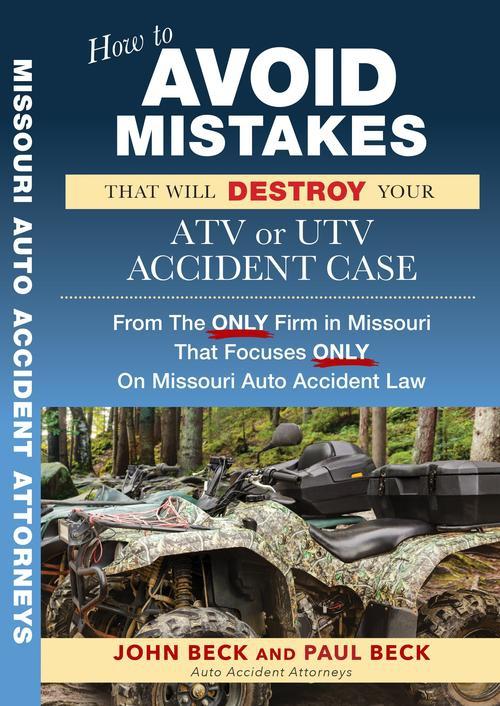Treatment and life care planning in Missouri spinal cord injury lawsuits involves creating a detailed, professional document that outlines all the medical care, equipment, and services you’ll need for the rest of your life after a catastrophic injury.
This comprehensive plan becomes critical evidence to prove the full extent of your future damages and secure fair compensation from insurance companies or at trial.
Missouri law allows you to recover compensation for future medical needs, but you must provide clear documentation of what those needs will be and how much they’ll cost.
What is a Life Care Plan?
A life care plan is a medically grounded, forensic projection of lifetime care and costs after a spinal cord injury. Prepared by a certified life care planner in consultation with treating physicians and therapists, it details:
- required services and equipment,
- follow-up care,
- rehabilitation,
- medications and supplies,
- mobility devices,
- technology,
- home and vehicle modifications,
- transportation,
- attendant care,
- and replacement cycles.
Each item is tied to clinical recommendations, with frequency, duration, and local pricing documented.
When our experienced Missouri spinal cord injury attorneys are in litigation, the plan functions as the primary proof of future medical needs and related expenses. Insurers routinely challenge long-term costs; a properly supported plan counters those challenges with method, sources, and rates.
An economist may convert projected totals to present value for the damages calculation. Plans are updated as your condition and treatment options evolve, keeping the evidence aligned with current medical reality.
SCI Care And Costs A Life Care Plan Includes
Spinal cord injuries create needs that last a lifetime. Your life care plan must account for every type of care and cost you’ll face, from medical treatment to daily living assistance.
Acute Care And Surgery
Acute care covers the immediate treatment you get right after your injury. This includes emergency room visits, spinal surgery, and your first hospital stay. These costs add up fast, but they’re just the start of what you’ll need.
Most people think about these upfront costs first because they’re obvious and immediate. However, the real financial impact comes from everything that follows over the decades ahead.
Inpatient And Outpatient Rehabilitation And Therapy
Rehabilitation helps you learn to live with your injury and regain as much function as possible. You might spend months in an inpatient rehab facility learning basic skills like transfers and wheelchair use. Outpatient therapy continues for years after you leave the hospital.
Physical therapy keeps your muscles strong and prevents complications. Occupational therapy teaches you how to do daily tasks with your limitations.
Many Missouri spinal cord injury victims need therapy throughout their lives to maintain their health and function. Your body changes over time, and therapy helps you adapt to those changes.
Durable Medical Equipment, Wheelchairs, And Mobility Aids
Living with a spinal cord injury requires specialized equipment that most people never think about. This equipment is expensive and needs regular replacement.
- Power wheelchairs are a significant investment and typically require replacement at various points throughout a person’s life after a spinal cord injury.
- Manual wheelchairs: Backup chairs can represent a significant expense for spinal cord injury victims.
- Standing frames: Help prevent bone loss and improve circulation
- Transfer equipment: Boards and lifts for moving safely between surfaces
- Hospital beds: Prevent pressure sores and help with positioning
The costs add up quickly when you consider that most equipment needs replacement multiple times over your lifetime.
Home And Vehicle Modifications
Your home and car will need major changes to be accessible. Home modifications include ramps, wider doorways, accessible bathrooms, and kitchen changes. These modifications can be very expensive, often representing a significant financial investment for individuals with spine injuries.
Vehicle modifications are just as expensive. You might need hand controls, wheelchair lifts, or even a completely modified van. Some people need to buy a new accessible vehicle entirely.
These aren’t one-time costs either. As your needs change or equipment wears out, you’ll need updates and replacements.
Attendant, Nursing, And Respite Care
Attendant care means having someone help you with daily activities like bathing, dressing, and eating. Depending on your injury level, you might need a few hours of help each day or 24-hour nursing care.
In Missouri, the cost of professional attendant care can be significant and is an important consideration in long-term care planning after a spinal cord injury. If you need full-time care, the annual expenses can be significant and ongoing.
Respite care gives your family caregivers a break. Even if family members provide most of your care, they need time off to rest and handle their own lives.
Medications, Supplies, And Preventive Monitoring
Long-term treatment typically includes analgesics, antispasmodics, and neuropathic-pain agents, plus bowel and bladder medications as needed.
Supplies recur every month—intermittent catheters and drainage bags, dressings and pressure-relief products, incontinence items, gloves, and disinfectants. These items need replacement schedules and local pricing in the plan.
Preventive care is ongoing: routine visits with a physiatrist and primary care, urology follow-ups, skin assessments, bone-density screening, renal ultrasound, periodic labs, and targeted imaging when symptoms warrant. Specify frequency and rates.
Individually, these line items look small; together they reach thousands of dollars per year. A properly built life care plan totals them so they’re not overlooked in settlement or at trial.
Who Prepares A Missouri Life Care Plan And When Should We Start?
Courts in Missouri allow recovery for future medical care, but they require reliable, detailed proof—not estimates or guesses. In practice, a life care plan serves as the roadmap, translating medical opinions into specific services, timelines, and costs.
Admissibility Of Future Care Testimony In Missouri
To be admissible, future needs must be shown to a reasonable medical probability—more likely than not. Testimony based on speculation or remote possibilities is excluded.
Experts must link each item to your diagnosis and treatment plan, identify frequency and duration, and support pricing with customary local rates. Costs must be medically necessary and reasonable.
A well-supported life care plan meets these standards. Built from treating-physician opinions and accepted guidelines, it provides the court with clear, defensible evidence of lifelong needs and their cost—supporting full compensation at settlement or trial.
Vocational And Economic Experts For Future Losses
A vocational expert looks at how your injury affects your ability to work. They consider your education, work history, and physical limitations to determine what jobs you can still do.
An economic expert takes the vocational assessment and calculates your lost earnings over your entire working life. They also determine the present value of all your future care costs.
These experts help the court understand the full financial impact of your injury, not just the medical costs.
Timing Relative To MMI And Updates Over Time
Maximum medical improvement (MMI) is the point your doctor says your condition has stabilized. Comprehensive life care plans are usually finalized at or near MMI, when long-term needs, frequencies, and replacement cycles can be projected with confidence.
Planning doesn’t wait for MMI. From day one, we document surgeries, therapies, equipment, complications, and costs. Early records preserve evidence, support interim funding, and make the final plan stronger.
Life care plans are living documents. They should be updated if your condition improves or worsens, new procedures are recommended, or technology changes. Revisions keep services and pricing current and ensure future-care damages reflect your real, evolving needs.
How Missouri Courts Treat Life Care Planning and Future Medical Expenses
Missouri allows recovery for future medical care, but courts require specific, reliable proof—not estimates. A well-supported life care plan turns medical opinions into concrete services, schedules, and costs in order to develop a winning case.
Admissibility Of Future Care Testimony In Missouri
Missouri courts require that future care needs be based on reasonable medical probability. This means your doctors must say the care is more likely than not to be necessary.
The testimony can’t be based on speculation or remote possibilities. Your experts must show that the care is medically necessary and the costs are reasonable. A well-developed life care plan meets these legal requirements. It provides the precise, professional evidence that courts require to grant full compensation.
How Comparative Fault Affects Your Recovery
Missouri uses a pure comparative fault system. If you’re found partially at fault for the accident, your compensation gets reduced by your percentage of blame.
For example, if your life care plan shows $2 million in future needs but you’re 20% at fault, you’d receive $1.6 million. Even if you’re mostly at fault, you can still recover some compensation.
How Our Missouri Spinal Cord Injury Lawyers Build And Prove Your Life Care Plan After A Motor Vehicle Accident
Spinal cord injuries change everything. At Beck & Beck Missouri Car Accident Lawyers—the only Missouri firm devoted solely to auto-crash cases—we document these losses the right way.
Because we handle complex spinal cord claims regularly, we pull the records, treating-doctor opinions, and local cost data that prove lifetime care needs and support full compensation.
Investigation, Records, And Expert Evidence
Evidence for a life care plan should be built from day one. Time matters—physical proof degrades and memories fade.
- Crash-scene preservation: Photos, measurements, EDR/GPS data, and impact analysis to establish mechanism and forces.
- Complete medical file: ER through rehab—imaging, operative notes, therapy logs, prescriptions, and provider recommendations.
- Expert coordination: A certified life care planner working with treating specialists and vocational and economic experts as needed.
- Market-rate costing: Local pricing, replacement cycles, staffing rates, and mileage/supplies documented with sources.
No assumptions—every item is tied to medical necessity, frequency, and duration, creating trial-ready proof of future needs and costs.
Working With Specialists To Document Care Needs
We coordinate with your treating team—neurology, PM&R, spine surgery, urology, pain management, and therapy—to define prognosis and specific care needs, with frequency, duration, and replacement cycles.
Opinions are framed to a reasonable medical probability and tied to local, verifiable costs so they’re admissible. When the record has gaps or is disputed, we add targeted evaluations (second opinions, FCE, seating/home-mod assessments, neuropsych) to strengthen it.
Presenting Damages To Insurers And Juries
Clarity wins. A life care plan carries weight only when decision-makers can see what care is required, why it’s medically necessary, and what it will cost over a lifetime.
The plan is translated into plain-English exhibits: treatment timelines, cost summaries with replacement cycles, and provider-sourced estimates. When appropriate, day-in-the-life videos and photos connect those numbers to the realities of dressing, bathing, mobility, and work.
Everything ties back to records and expert testimony, so the path from diagnosis to dollars is easy to follow. The result: future needs become concrete—and hard to dispute.
Who Pays For Treatment While Your Case Is Pending?
Medical bills start arriving long before your lawsuit resolves. We help you navigate the complex insurance system to get treatment while protecting your case.
MedPay, Health Insurance, And Coordination Of Benefits
MedPay (medical payments coverage) on your auto policy pays crash-related medical bills regardless of fault, up to your policy limit. Your health insurance will usually cover treatment as well, but it may later seek reimbursement from your settlement.
The key is coordination. We use MedPay to hit co-pays, deductibles, and early bills, route the rest to health insurance, and manage any reimbursement claims so you don’t pay twice. Getting the order right prevents gaps and can save you thousands.
Provider Liens, Subrogation, And Bill Negotiation
Provider liens are claims hospitals or doctors place on your settlement for unpaid balances. Subrogation is your health insurer’s right to be reimbursed from any recovery. Both can sharply reduce what you take home.
The fix is careful coordination: verify the lien, limit it to crash-related care, apply contract discounts, remove duplicates and write-offs, and challenge noncompliant notices. Then negotiate reductions where the law and policy allow.
Result: fewer dollars siphoned off by liens and reimbursements, and more of the settlement preserved for your future needs.
Uninsured And Underinsured Motorist Coverage
Uninsured/Underinsured Motorist coverage on your policy protects you when the at-fault driver has little or no insurance. In catastrophic injury cases, this coverage is often crucial.
Many people don’t realize they have this coverage or understand how it works in uninsured driver accidents. We investigate all available policies to find every source of compensation.
This coverage can make the difference between getting fair compensation and being left with unpaid bills and unmet needs.
Contact Our Missouri Spinal Cord Injury Lawyers For A Free Consultation
Spinal cord injuries from motor vehicle accidents require experienced legal representation. At Beck & Beck Missouri Car Accident Lawyers, we have decades of experience helping Missouri accident victims recover compensation for their injuries.
We handle every aspect of your life care planning and work with trusted experts throughout Missouri. Our family-run firm provides personal attention while aggressively pursuing maximum compensation.
We advance all costs, and you pay no fees unless we win your case. Contact us online for a free consultation. We’re available 24/7 to help you get the care and financial security you need.
Frequently Asked Questions
Who Covers The Cost Of Creating A Life Care Plan In Missouri Spinal Cord Cases?
Your attorney typically advances the cost of creating the life care plan, which gets reimbursed from your final settlement or verdict. The plan is usually ordered after your condition stabilizes but before settlement talks begin.
Must Missouri Courts Have Complete Certainty About Future Care Needs To Award Damages?
No. Missouri does not require absolute certainty. The standard is reasonable medical probability—more likely than not. Your treating physician must tie each future-care item to your diagnosis and prognosis and explain why it’s medically necessary.
Can A Life Care Plan Be Modified If My Spinal Cord Injury Condition Changes?
Yes. A life care plan can be updated if your condition changes—whether you improve, worsen, need new surgery, or develop complications.
The planner will get fresh medical records and opinions, then issue an addendum or revised plan reflecting updated services, frequencies, replacement cycles, and current local costs.
If your case is in litigation, the economist can also recalculate the present value of the new totals.
Will My Auto Insurance MedPay Reduce My Final Spinal Cord Injury Settlement?
Your auto insurance may have a right to reimbursement from your settlement, but we negotiate to reduce these claims. Our goal is to protect as much of your settlement as possible for your ongoing needs.
Do Day-In-The-Life Videos Help Missouri Juries Award Higher Spinal Cord Injury Damages?
These videos are powerful tools that show juries your daily challenges and care requirements. They make abstract future damages concrete and often lead to higher compensation awards.
Should I Wait Until Reaching Maximum Medical Improvement To Begin Life Care Planning?
No. Start now. The full life care plan is usually finalized at or near MMI, when your prognosis is stable. But early documentation—surgeries, complications, equipment, therapy frequency, and costs—builds the foundation.
It helps secure interim benefits, preserves evidence, and makes the final plan stronger. If your condition changes, the plan can be updated.







